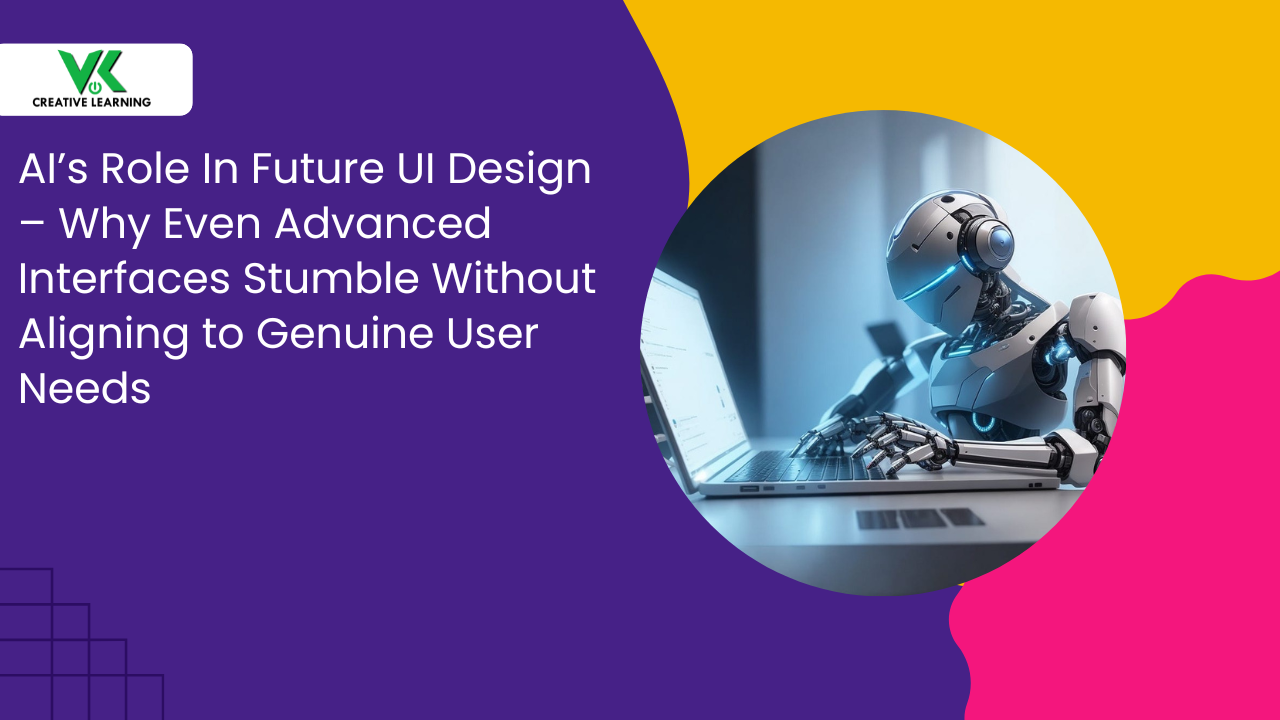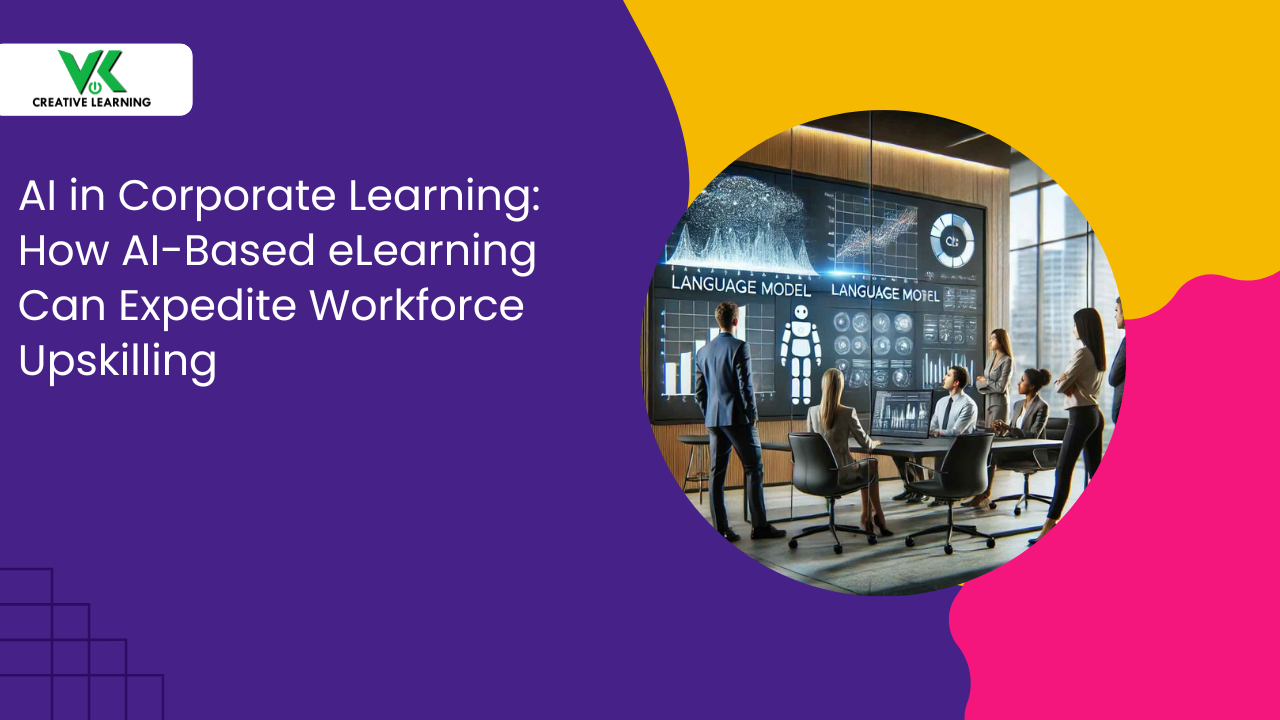AI Personalized Learning for K12 Students: Why is it Required and How Can It Solve Common Learning Problems?
July 25, 2025
The same kind of lessons can overwhelm many school-going students. AI’s custom-made path can reshape learning; hence, it is revolutionary in many ways. The best part is that it distinguishes it from others. It uses adaptive algorithms (skill-based content adjustment) for the same.
These help to gauge a child's one-of-a-kind learning patterns and present improvements. That is: content adjustments are right away recommended with a high level of precision.
As a result, learners grasp concepts without pointless repetition. This student-focused AI personalized learning for K12 students approach closes learning gaps swiftly.
Importantly, for early-age learners, it works like their most-loved video games--interesting and better.
As the learners get better at answering the questions, the next level becomes more challenging with AI-based e-learning. In fact, it gives the knowledge seekers a never-before-seen challenge-- that too only when they are ready.
It avoids repeating simple-to-solve topics, making learning a joy-filled adventure. Consequently, parents see more joyful, self-assured children. The students also get involved with screen-based 3D lessons enthusiastically.
Thus, blending AI with teacher-led guidance can be handy as the results are greatly improved from the students' perspective. The AI personalized learning examples create more profound conceptual understanding for students.
Consequently, teachers have to perform less routine day-to-day grading, and they focus on their truly important job.
Table of Contents:
Defining AI Personalized Learning for K12 Students: An Overview
1. Addressing Diverse Learning Needs
2. How AI Personalized Learning Improves Knowledge Ingestion
- Real-Time Adaptation Simplifies Concepts for Young Minds
- E-learning Math Game That Scales Up Difficulty
- Reading Module That Highlights Key Vocabulary
- Guided Feedback Sparks Confidence and Curiosity
3. Real-Life Applications in E-Learning Environments
- Adaptive Math Platforms That Mirror Classroom Support
- Language Arts Tools with Personalized Reading Paths
- Science Simulations That Customize Experiment Complexity
Defining AI Personalized Learning for K12 Students: An Overview
AI uses a special computer-based algorithm that makes learning easy for learners. Content modifications are suggested to adapt to learners' preferences.
It gathers students' performance-related data, then adjusts. Each learner gets perfect-fit exercises that help learners to get a comprehensive understanding. This approach stops totally undue frustration and minimizes boredom from already-mastered tasks.
Here's a simple way to understand it: think of an AI personalized Learning for K12 students (made-for-learners). It only serves lessons that learners find fun to learn and comprehend.
Thus, knowledge seekers get no tedious or bland content or hard-to-understand concepts. Thus, the AI provides perfectly smooth content calibration.
Simultaneously, they offer instant feedback if errors are committed by learners. Also, suggestions are provided for targeted practice immediately.
Additionally, AI-based e-learning dashboards display clear, actionable reports. This gives an understanding of students’ overall class progress. This way, teachers can assess trends swiftly.
Thus, teachers can intervene as when needed or whenever students encounter difficulties. Ultimately, the role of AI in personalized learning integration fosters empowered learners.
Addressing Diverse Learning Needs
K-12 classrooms host learners with diverse-minded understanding. Thus, one-size-fits-all teaching may often leave learners struggling without needed support. Importantly, students may feel excluded and overlooked if teaching is done in an intensely paced way.
This way, students may lose confidence as the content is difficult (challenging in many ways). Also, if needed, everyday practical examples are not covered with concepts, learning will become further difficult.
For example: there may be bright children who may get bored by over-simplified teaching or content.
This type of content, which is time-consuming repetition, may zone them out gradually.
A girl named Maya, for instance, may be good at finishing tasks before others. Thus, with time, she may stop putting extra effort or trying altogether.
On the other hand, Rahul, who has always struggled with reading, may find it tough to keep up with fast-tracked-uniform content. His day-to-day confidence will start draining silently, and he may face failures.
But with AI personalized learning examples in e-learning, teachers can adapt to individual ability and provide matching learning tasks. This measure with AI-based e-learning will help both Maya and Rahul to thrive.
Maya tackles harder math problems; Rahul reads (bite-sized-interesting-reading) passages slowly, finally smiling.
How AI Personalized Learning Improves Knowledge Ingestion
Real-Time Adaptation Simplifies Concepts for Young Minds
Young minds who have fast-learning capability and are curiosity-driven can grasp topics quickly. For the same, AI personalized learning for K12 students answers by displaying vivid, moving visuals.
Also, the incorporation of cartoon-based (child-friendly and logic-guided) games in K12 e-learning helps to improve learners' responses. For example: a button-eyed, pony-tailed, small girl may smile after playing the virtual game of counting five apples correctly.
Such 3D-based self-explanatory animated modules (with sound-enhanced) put extra emphasis on essential language concepts softly.
This also aids to improve small children's reading capability with time. With e-learning game level unfolding skill-matching and goal-based questions. Thus, a sturdy base (concept-rooted, memory-ready) is built robustly.
E-learning Math Game That Scales Up Difficulty
E-learning can present a captivating, animated number game based on level-matching and rewards. If the student is able to answer correctly, the game levels turn trickier after every stage.
Also, it gives a clear presentation of 2D animated numerical problems (color-coded) along with simple sums.
Example: when children see animated apples getting added (2+3), students become cheerful (wide-grinning) and may yell 'Five!’.
On the other hand, when mistakes are committed by the students, scenes stop (as mistakes are found) and hints are offered with smiley signs.
Slowly, children's struggle with math fades as they solve problems based on hints, and their confidence rises.
Reading Module That Highlights Key Vocabulary
An animated reading app (with lively story-oriented and progress-trackable features) can display tales based on readers' pace.
The lines scroll with animation effects, with words being tagged based on age. Then, new words pop up with meanings.
In such a case, a shy girl (who loves animation and word-based animation characters) will learn easily. This animation can also be like a laughing baby panda teaching or learning stories.
Also, AI personalized learning examples in e-learning contain word banks (fun-packed, theme-applied animation stories).
These techniques help to revise whatever has been taught (with an emphasis on tricky) daily. Gradually, with time, students' vocabulary expands as they learn without stress or drills.
Guided Feedback Sparks Confidence and Curiosity
The AI personalized learning for K12 students in e-learning courseware has several characters. These characters cheer and praise students as they cross each level. They are programmed to encourage students as they give the right answer.
For example, animated happy bears may shout and cheer every correct answer, mentioning, 'Good job!'
On the other hand, when children make mistakes, they aren't discouraged. Instead, they are given clues, like Count again--see what’s missing?
Seeing this, a child (bubble-blowing with curious eyes) tries to answer again, giggling at animated talking and dancing numbers.
Additionally, e-learning algorithms show visual treats which are reward-synced. This nudges the small learners to try without fear. Slowly, this kind of learning transforms the kids as they shine with confidence and feel delighted.
Real-Life Applications in E-Learning Environments
Adaptive Math Platforms That Mirror Classroom Support
AI-based e-learning platforms have features with capabilities of fast learning and real-time analysis. This allows teachers to understand performance patterns of learners. That is, the AI personalized learning platforms for K12 students can scan answers. Then, based on the answers, accordingly, offer the next step practice is suggested.
The difficulty algorithms (level-adjusting, learner-tracking) in AI-driven e-learning can adjust content level immediately. This is more akin to what teachers do in a class--changing the difficulty level of tasks of lessons.
Examples: A boy (pencil-snapping, tear-eyed) who is struggling with subtraction problems may get hints in the form of pop-ups.
Similarly, a girl (fast-thinking, math-loving) has supposedly whizzed ahead, solving all the problems. Noticing her capabilities, AI-based e-learning algorithms will present harder puzzles.
Language Arts Tools with Personalized Reading Paths
The platform (interest-adapting, vocabulary-stretching) changes stories based on the learners’ daily preferences.
Similarly, there may be a boy who dreams about space and galaxies. In such a case, e-learning may suggest more cosmic tales.
In the same lines, a girl (animal-loving, zoo-visiting) may be asked to write about animated animals. Thus, the system may queue jungle-themed animated characters.
For English, the virtual books (based on age) will provide grammar support or stories.
Science Simulations That Customize Experiment Complexity
The AI personalized learning research virtual lab (based on logic-mapping) presents experiments on using wires and building robots.
Example: One kid who loves circuits with buttons and light bulbs will be shown how to make blinking alarms.
Importantly, the AI-based e-learning algorithms provide each setup (with feedback and progress chart). These logged data aid teachers to understand who needs a hand or extra support.
This way. multiple measures in AI personalized learning can change the perspective of students. That is, science turns from scary pages to a magical, fun journey.
Conclusion
AI Personalized e-learning platforms for K12 students have been designed to shape learners' math practice skills.
Thus, children can grasp lessons fast using real-time (question-by-question-checking) feedback systems.
Schools can adopt VK Creative Learning (VKCL) AI-driven personalized e-learning courseware. This course medium syncs with child-habit-based learning and helps them to achieve goals.
Also, AI personalized learning examples are grade-specific and involve targeted teaching.
Importantly, VKCL creates student-first (attention-span-adjusted) course content. The AI-based e-learning content aligns with the curriculum with a daily-concept reinforcing methodology.




